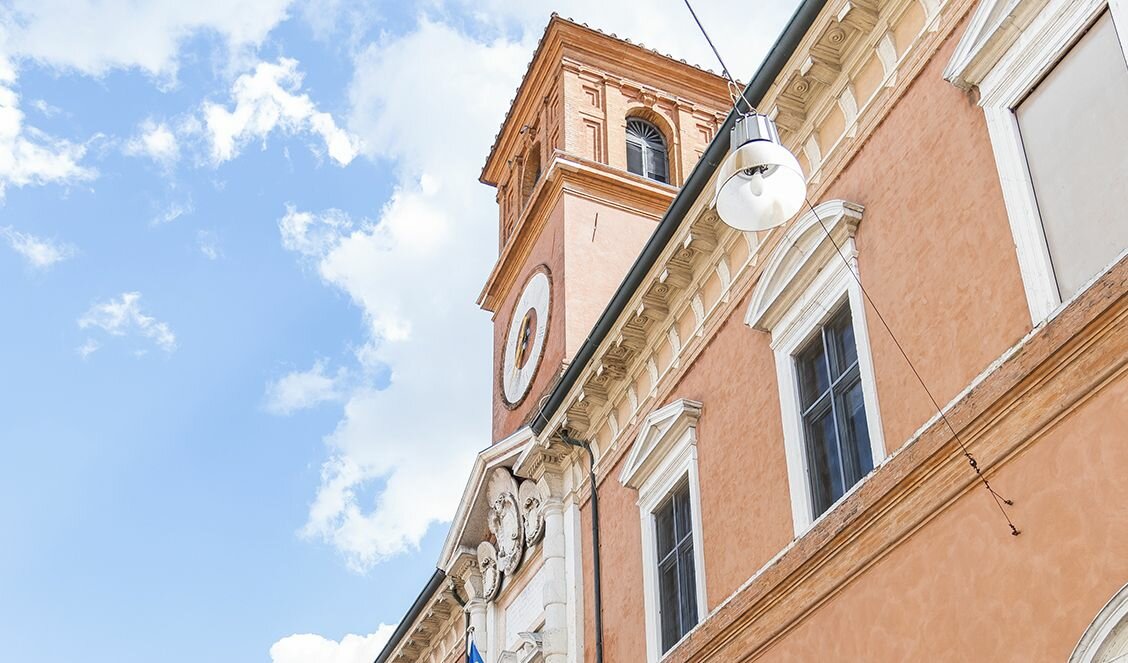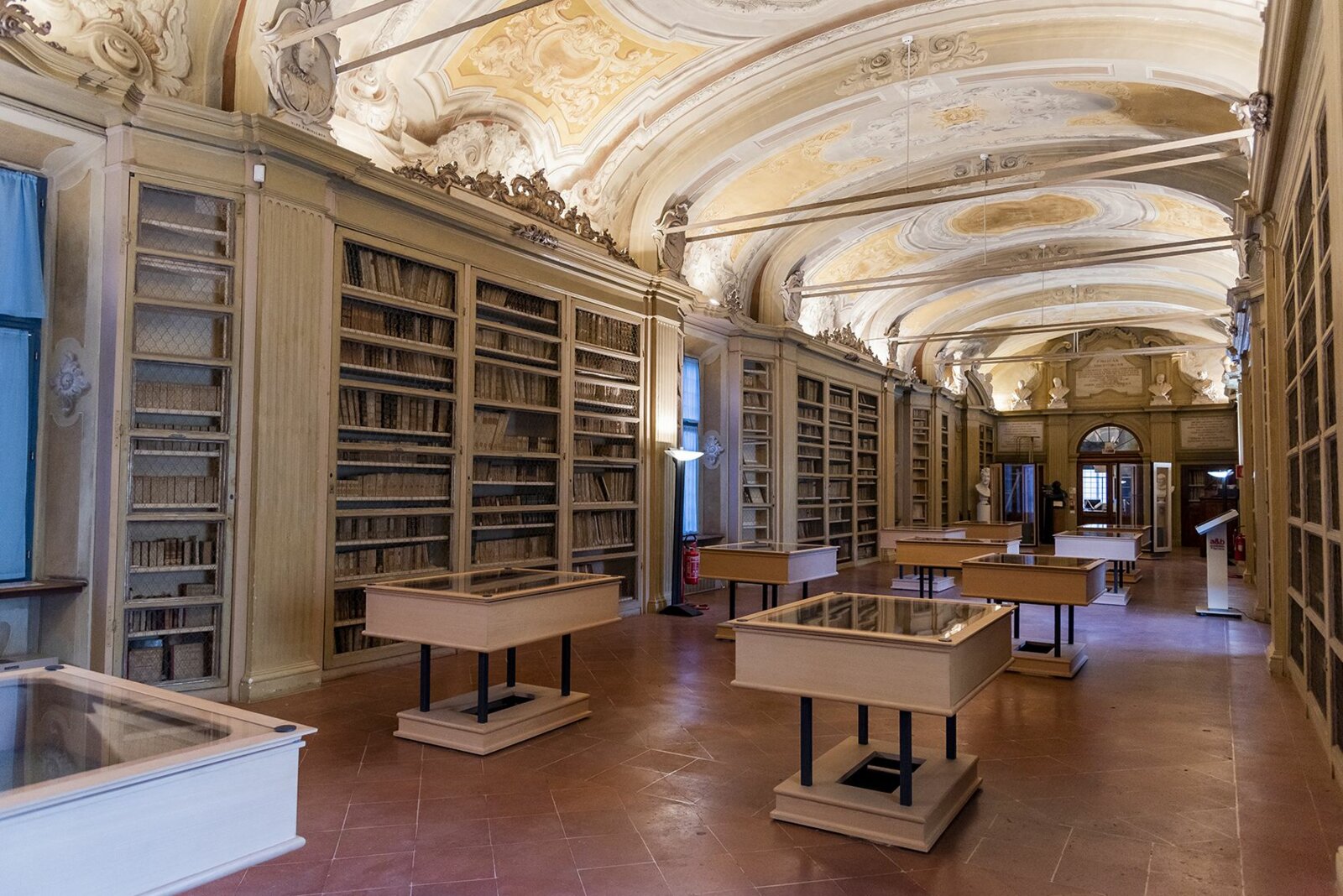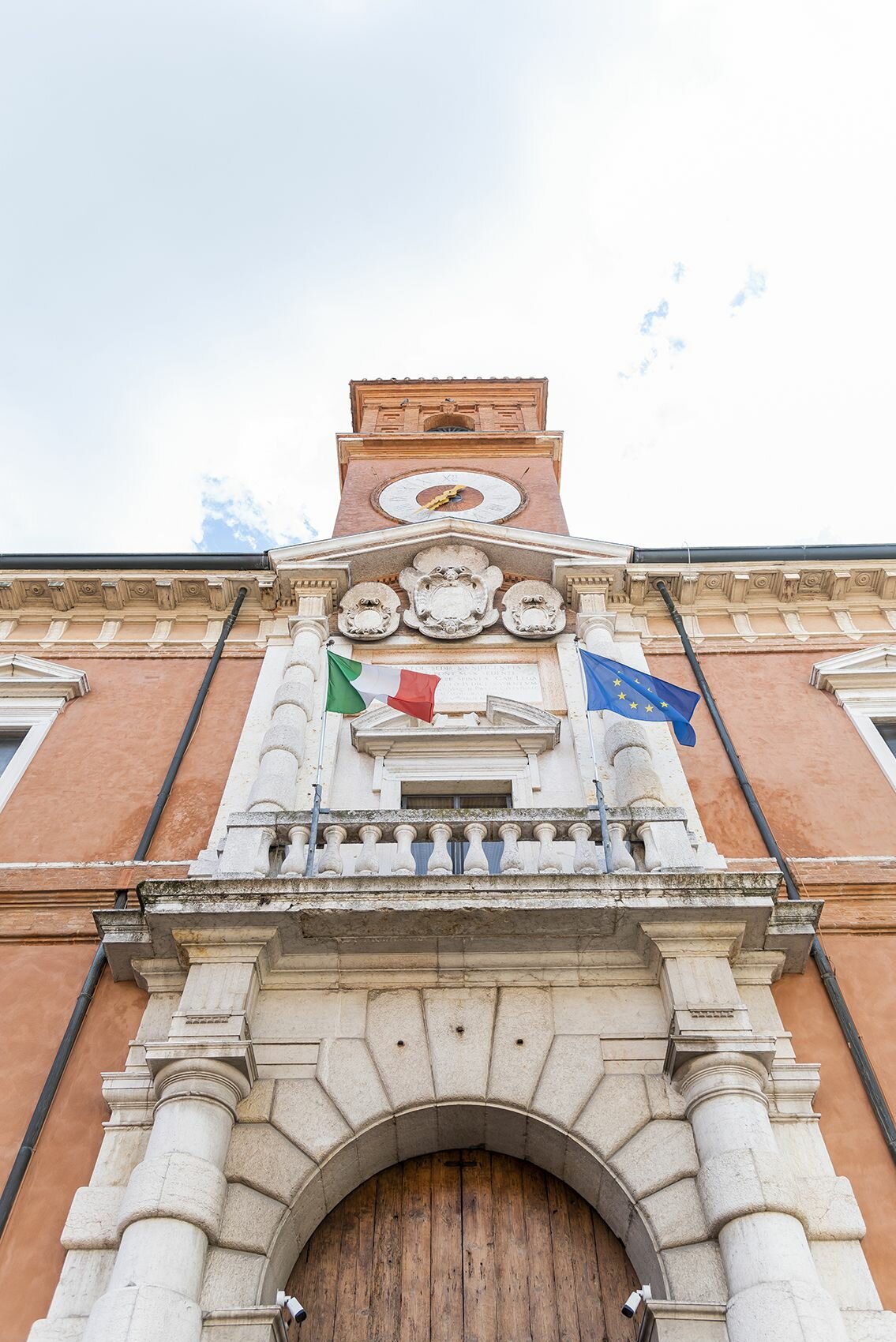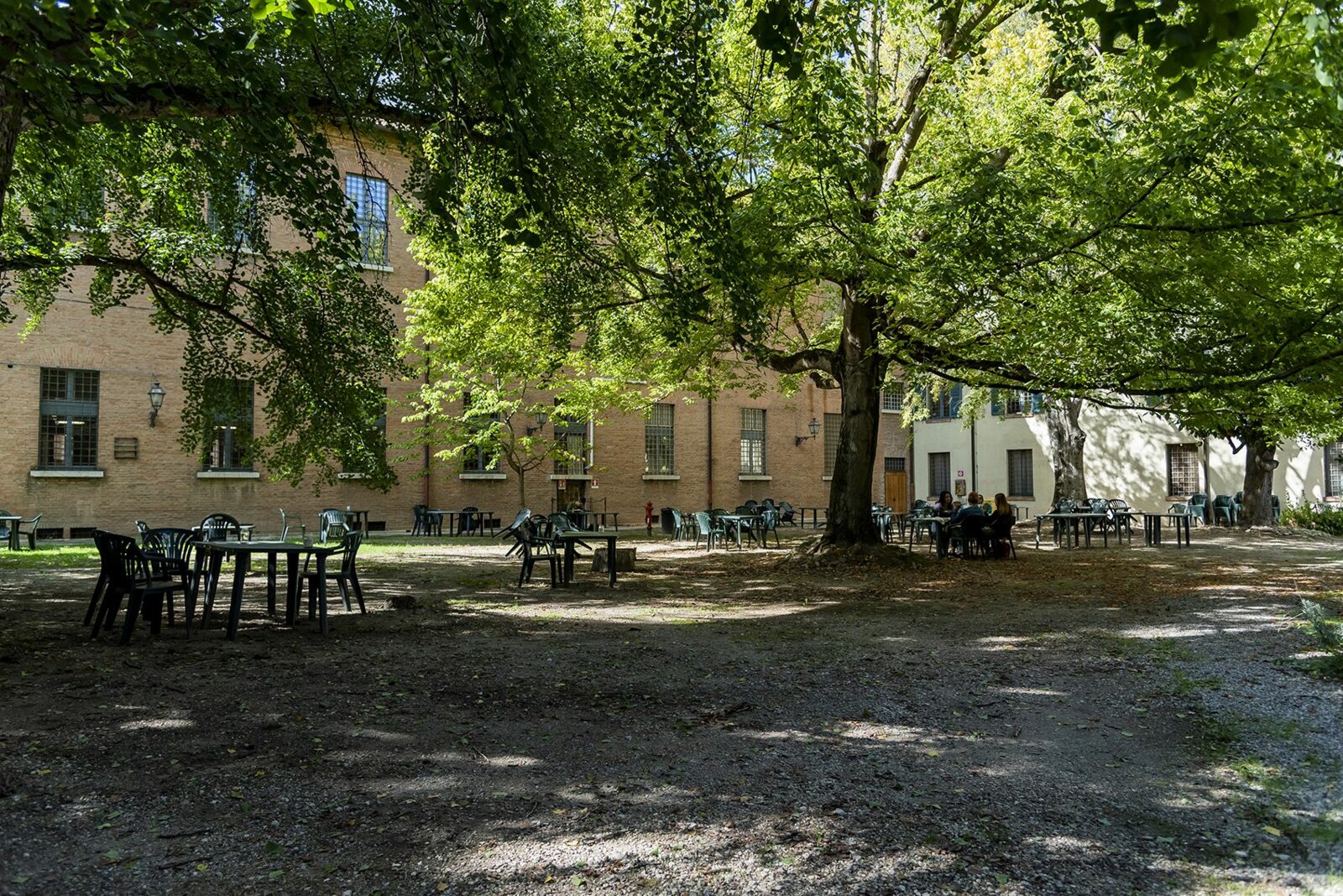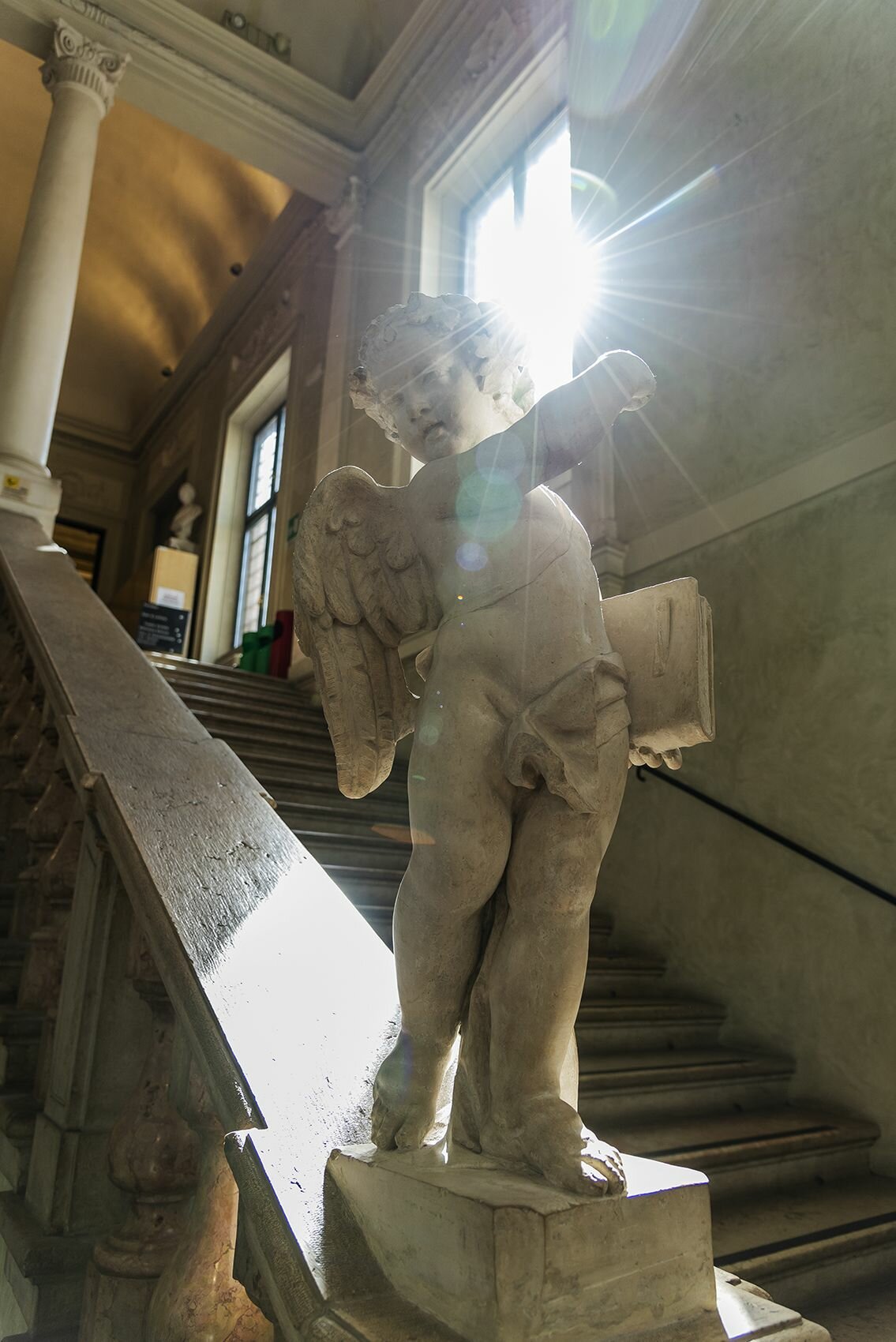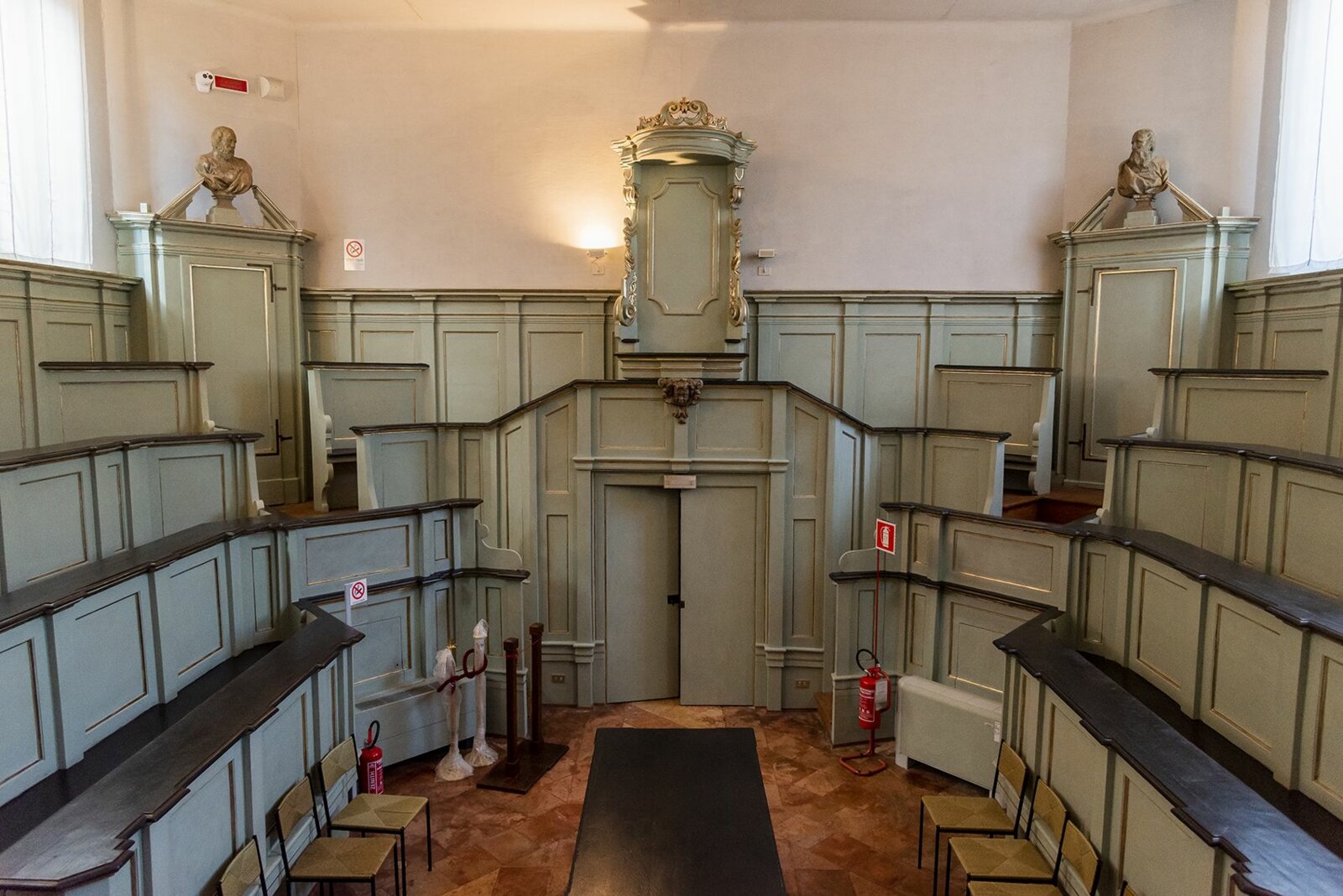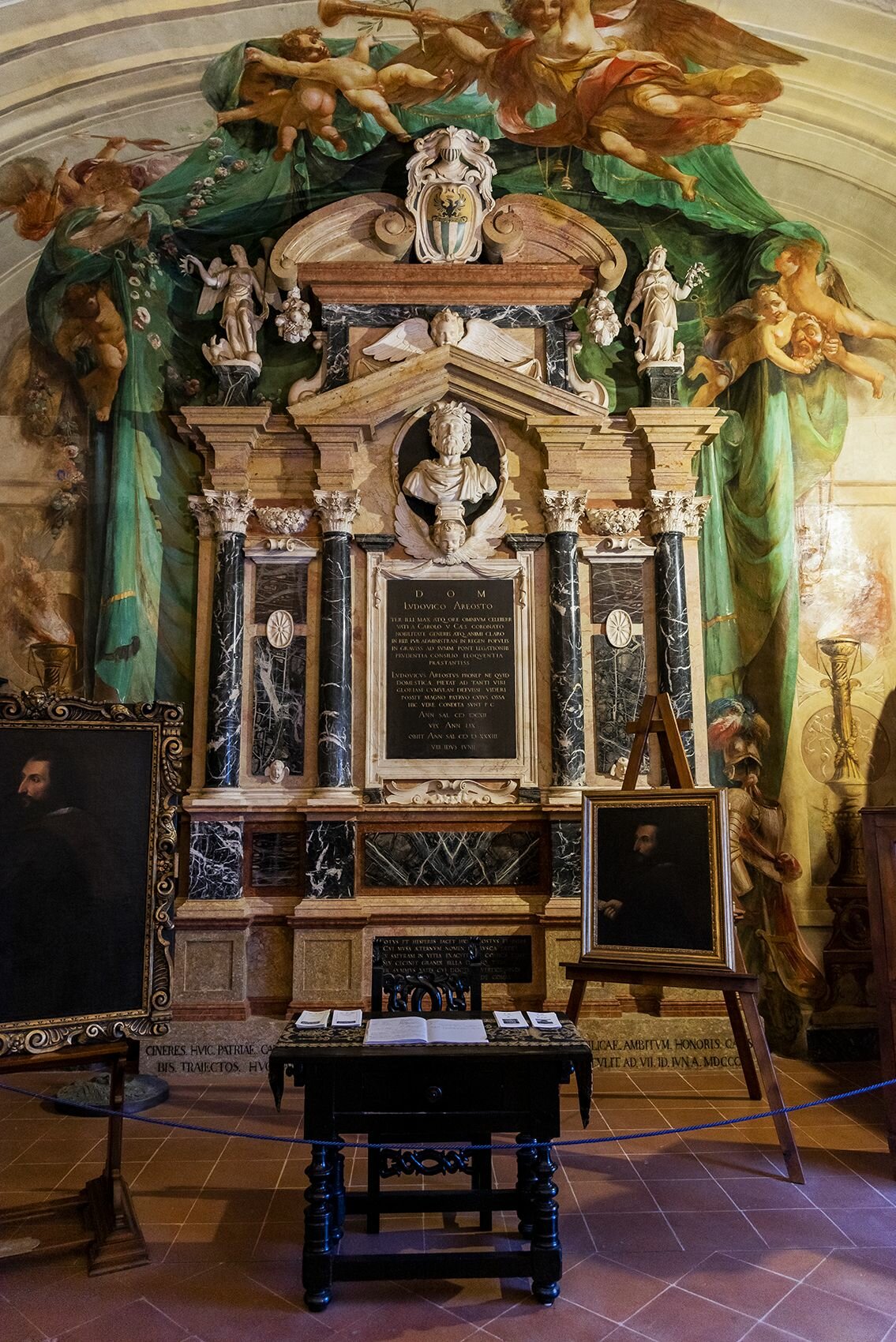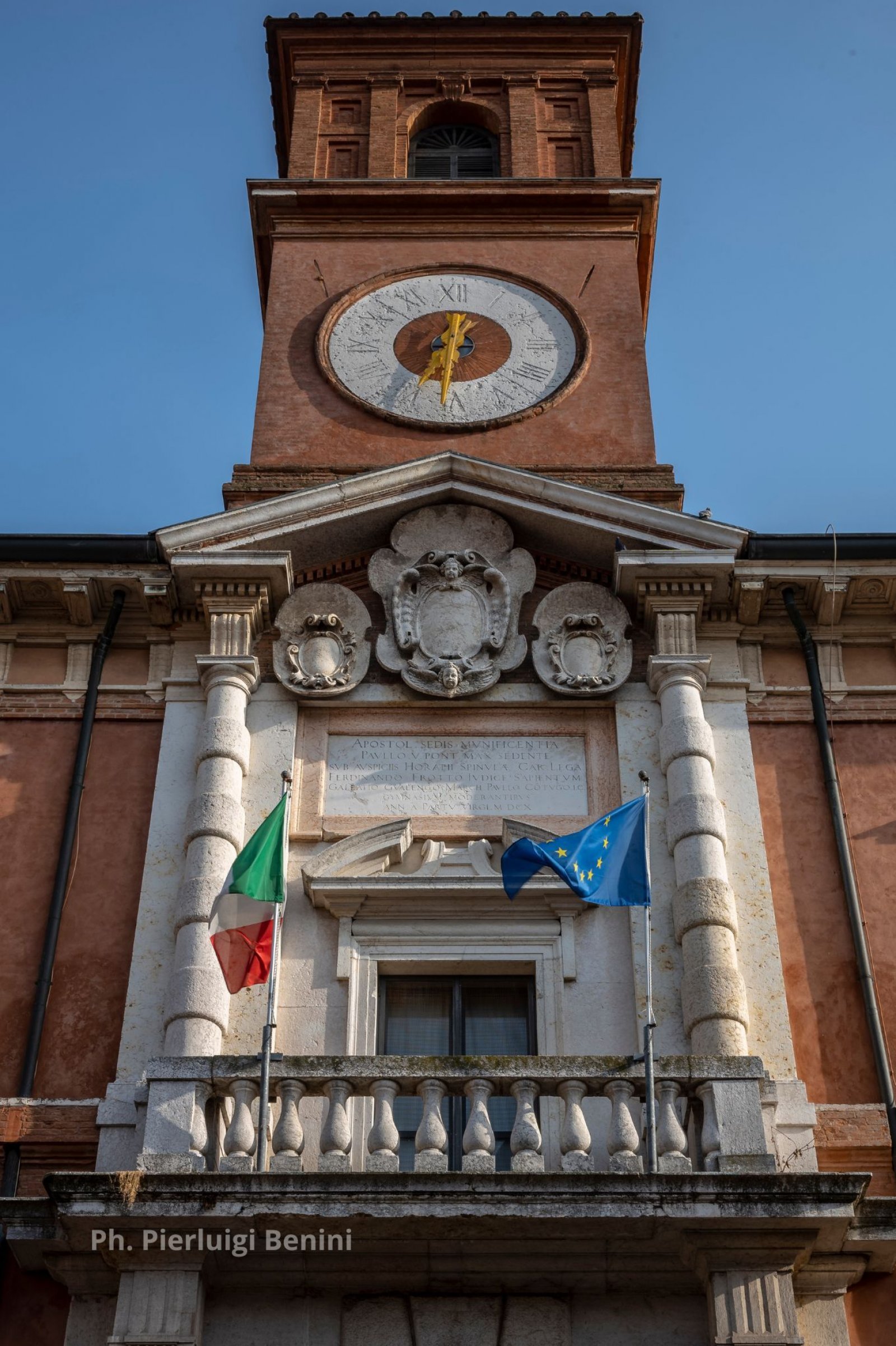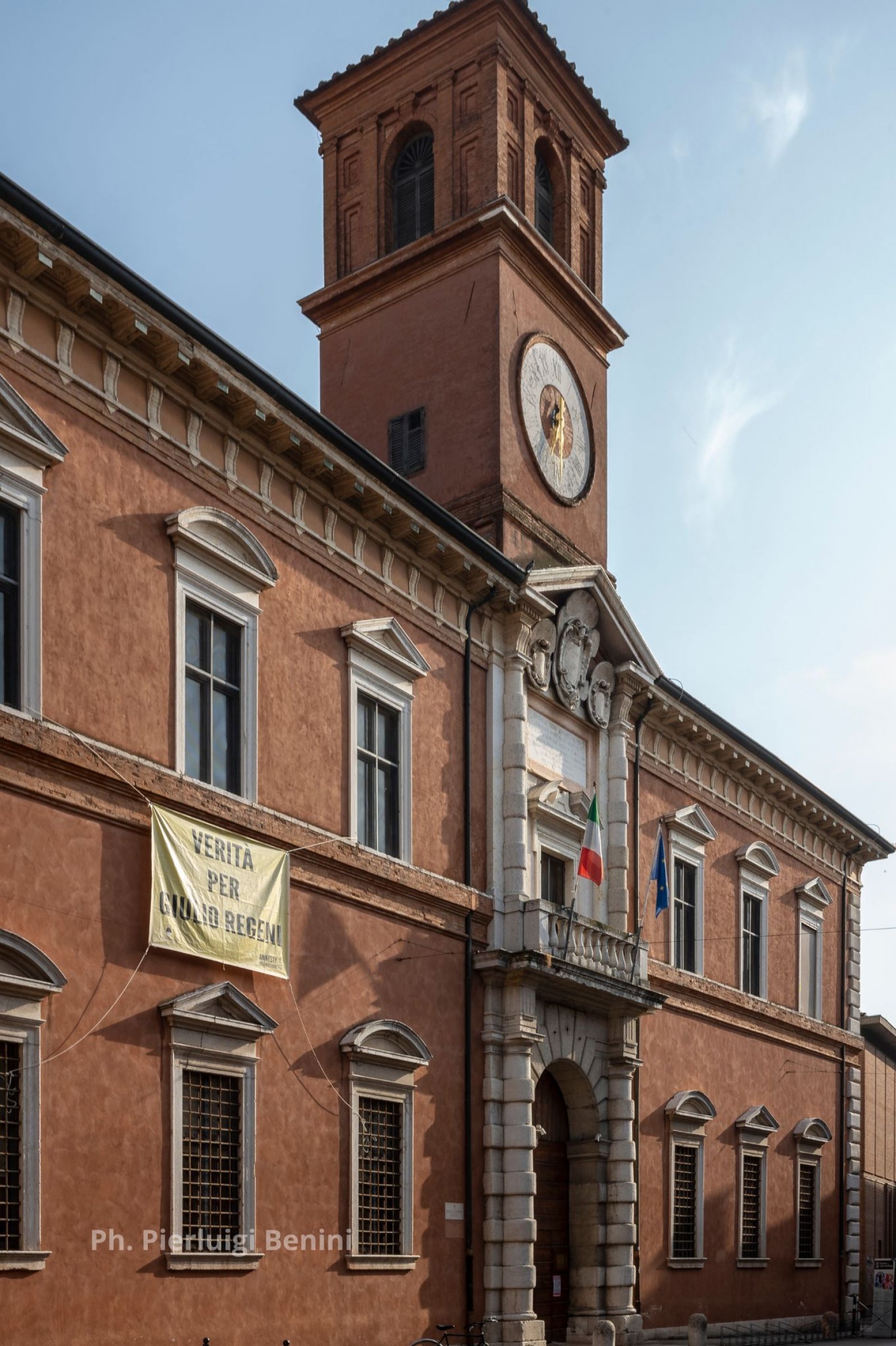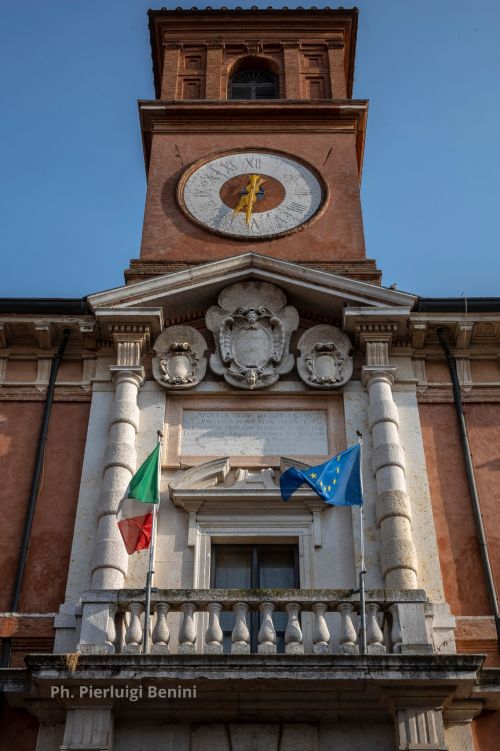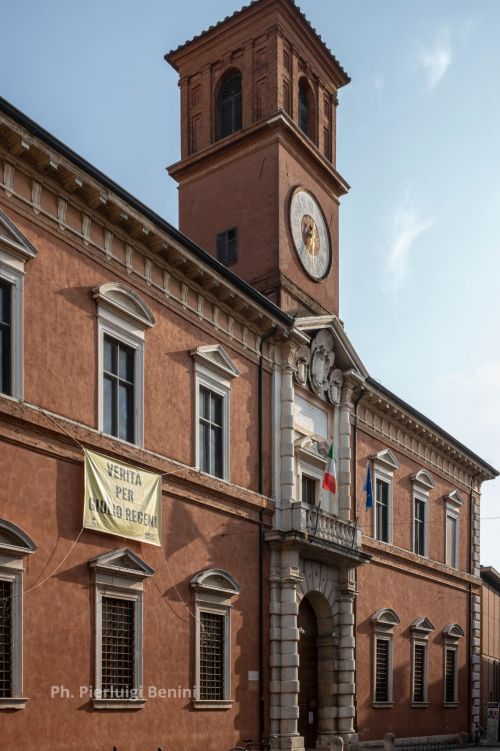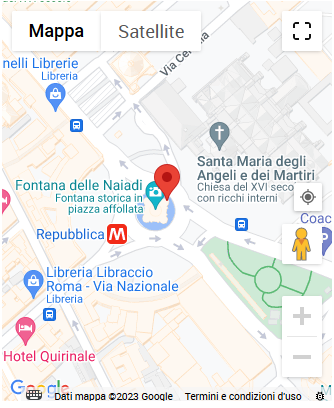Potrebbe interessarti anche

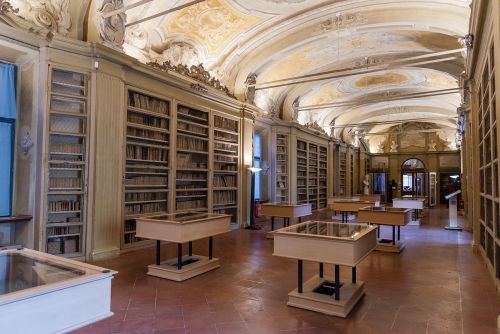
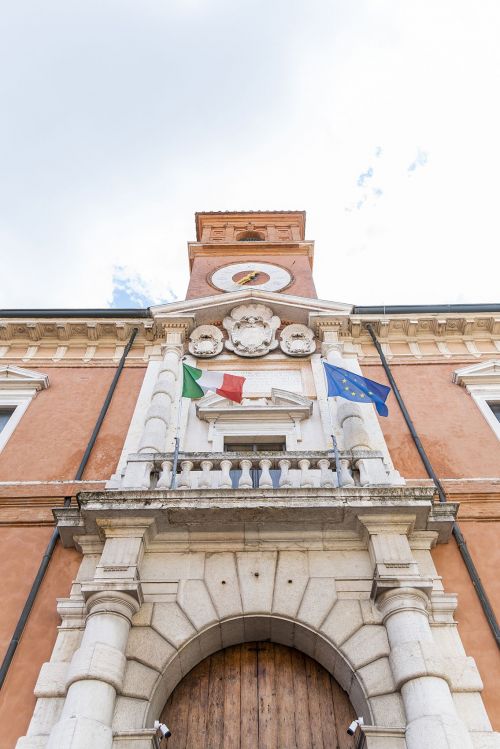
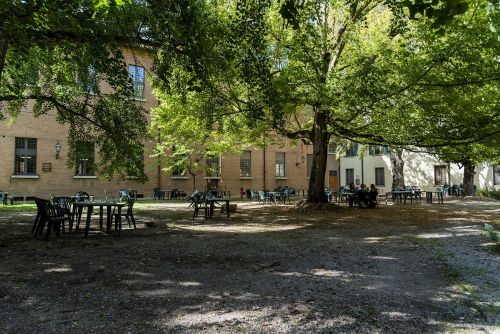
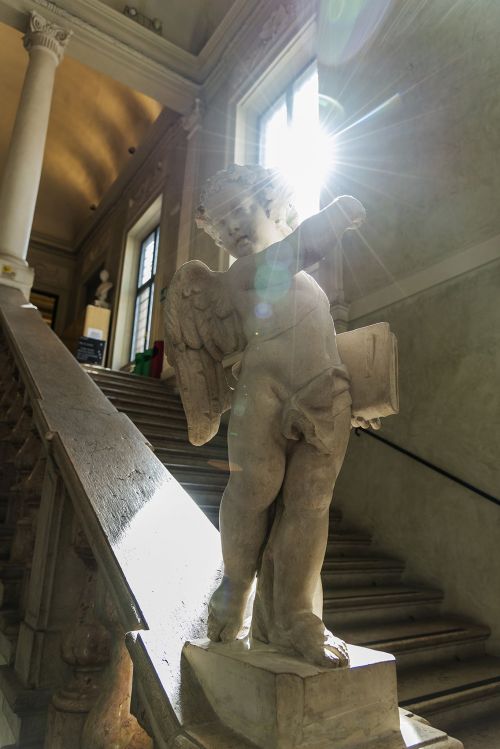
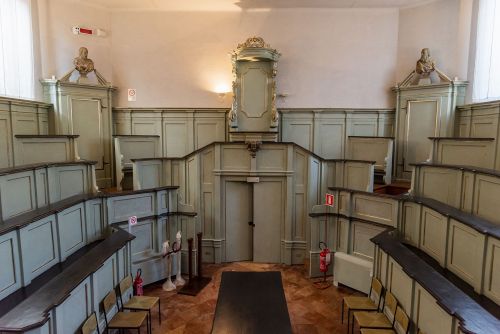
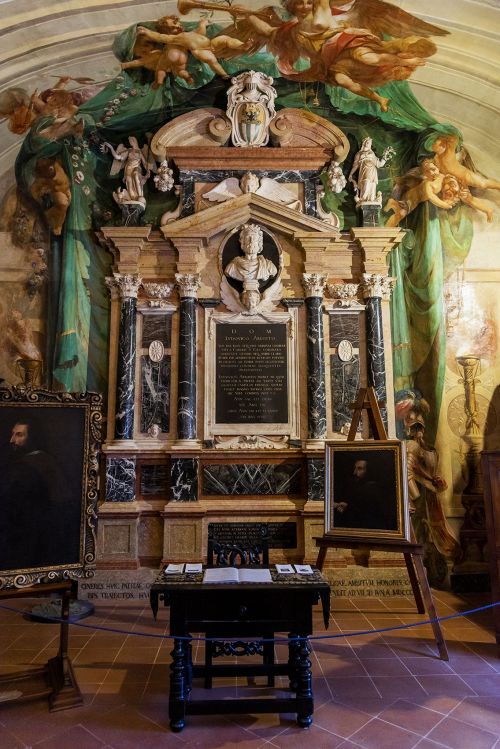
Palazzo Paradiso - Ariostea Library
Tucked away at the end of Via Mazzini, between the winding road of Via Scienze, Palazzo Paradiso is home to the Ariostea Library, the most important civic library in Ferrara. The library is freely accessible and is a refuge for many students who choose its quiet halls to study in peace.
The building holds a magnificent inner courtyard and a wonderful garden located at the very back. the Palace is not only for studying and reading, it is also a destination for many visitors because of its architectural value and the treasures it houses.
Historical Notes
Palazzo Paradiso was erected in 1391 on commission of Alberto V d'Este on the occasion of his marriage to Giovanna de Roberti. In 1567 the palace became the prestigious home of the university faculties. For the occasion, the structure was revised by Giovanni Battista Aleotti, who moved the façade to Via delle Scienze, where it currently stands, adding the clock tower and the large white stone portal.
In 1731 anatomist Giacinto Agnelli and architect Francesco Mazzarelli built the anatomical theatre on the ground floor.
Palazzo Paradiso was also the first home to the Botanical Garden of the University of Ferrara, established in 1771 under the Reform implemented by Clement XIV. In 1729 the Municipality granted the use of the garden of Palazzo Paradiso to the University to ‘reduce and maintain it in Orto dei Semplici’. Although interest in the study of plants and their therapeutic effects had been established in the city since the Renaissance, no public botanical garden is known to have existed prior to the one established at Palazzo Paradiso.
The Anatomical Theatre
Opened in October 2021 after careful restoration, Ferrara's Anatomical Theater Giovanni Tumiati is one of the few remaining examples of its kind in Italy and one of the most important. Crossing the threshold of the hall that houses it, you will unexpectedly find yourself in an intimate space. The name theatre derives more from the custom, especially during the 17th century, of allowing the public – and not just doctors and students – to attend dissections.
But this small room will fill you with all the wonder of what for centuries was a fundamental practice for the advancement of modern medicine: the dissection of cadavers. The floor plan of the anatomical theatre is octagonal and on either side, you will find several entrances: some for the physician and some for students and spectators. The table in the centre is lit by four large windows so the procedure could be perfectly visible from the stands.
The special octagonal shape of the Ferrara Anatomical Theater was adopted based on precise studies. The well-known anatomical theatres of Padua and Bologna were taken as examples but eliminating their main flaws. The former was in fact oval but dimly lit, while the latter was square and only had one entrance.
The Tomb of Ludovico Ariosto
Palazzo Paradiso also houses the mortal remains of Ludovico Ariosto, who died in Ferrara in 1533. The funeral monument, erected in 1612 to a design by architect Giovan Battista Aleotti, was here from the Church of San Benedetto in 1801.

